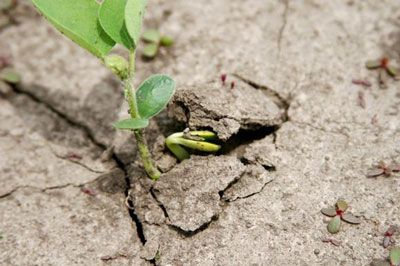
Multiple factors this spring have combined to result in soybean stands that are sometimes patchy, or generally thinner than desired. Following are some guidelines for evaluating soybean stands and then determining what actions, if any, are advised.
Assess the Soybean Stand
[May 19, Agronomy Services published an article, “SOYBEAN POPULATIONS & EMERGENCE CONSIDERATIONS,” which contained charts helpful in determining soybean populations. The following text summarizes some of this information.] Soybeans planted in 15 inch rows, or wider rows, are best evaluated by using the row count method. Count the number of plants in a length of row representing 1/1000th of an acre and repeat the counts at several representative places across the field.
30 Inch Rows Number of Plants x 1000 in 17 Feet, 5 Inches of Row
20 Inch Rows Number of Plants x 1000 in 26 Feet, 2 Inches of Row
15 Inch Rows Number of Plants x 1000 in 17 Feet, 5 Inches of Row (Count 2 Rows)
Solid-seeded soybeans, or soybeans drilled in 10 or 7.5 inch rows, are best evaluated by using the hoop method. Count the number of viable plants within a hoop of known diameter and repeat the counts at several places within the field. Multiply the average number of plants within the hoop by the Hoop Factor to determine the plant stand. [Tip: Make your own hoop or modify an existing one to result in a hoop factor of a nice, round number.]
Hoop Factor = 43,560 ÷ [[Radius2 (inches) x 3.14] ÷ 144]
A hoop with an inside diameter of 31.5 inches has a hoop factor of 8000.
A hoop with an inside diameter of 33.75 inches has a hoop factor of 7000.
A hoop with an inside diameter of 36.5 inches has a hoop factor of 6000.
Minimum Surviving Soybean Stand?
As a general rule, soybean yields are maximized at a standing plant population of 120,000-140,000 plants per acre (PPA). However, multiple research trials have shown that well distributed soybean plants at a population of 100K PPA, or greater, will yield near maximum. Other research suggests that well distributed soybean plants at a population as low as 70K PPA will yield within 10 percent of maximum. Weed control can be more of a challenge at low populations but soybeans are remarkably resilient in their ability to compensate for reduced stands.
Determine the Source of the Soybean Stand Deficiency
It is very important to determine the source of the initial soybean stand deficiency. Certain diseases or herbicides may continue to reduce the stand, or may cause problems if soybeans are replanted or inter-planted into the affected areas.
Consider the Calendar
For much of our area, May 20 is the average last date to plant soybeans and achieve near full yield potential. This date is slightly earlier as you go north and slightly later as you go south. Initially, after this date, bushel yield loss per day is relatively low, but increases over time. An average is about 1/3 bushel loss per day of delayed planting. While it may seem more aesthetically pleasing to just rip up a questionable stand and start with a “clean slate,” this could be costly in terms of yield potential of the replanted soybeans.
Factor in Replant Costs
Replanting is never free of cost. However, seed-company offers for replant seed, insurance settlements, and other adjustments may make the replant less costly. Be sure to consider all of these expenses, plus yield losses from planting delays, when considering whether you should replant the soybeans.
What About Inter-Seeding to Thicken an Existing Stand?
Inter-seeding to thicken a thin soybean stand may have merit if the existing stand has only recently emerged and the replanted or inter-seeded soybeans can be expected to emerge in just a few days. Otherwise, the inter-seeded soybeans will act as weeds in the existing stand. If patches or large areas of fields drowned out, failed to emerge, or were killed by pests or diseases, these patches can often be successfully replanted or inter-seeded to prevent having to replant the whole field.